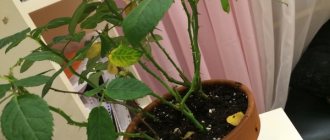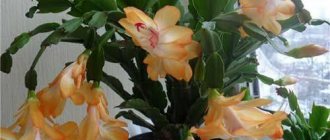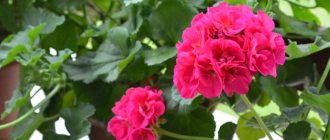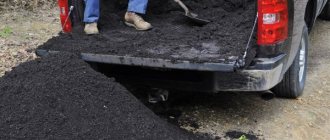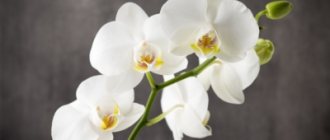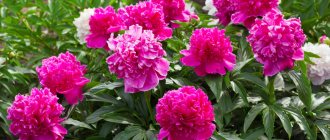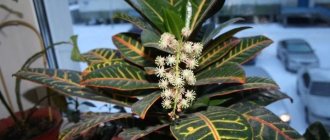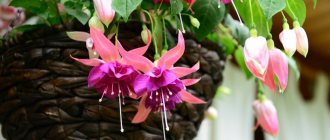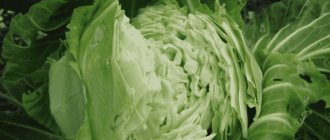Description and characteristics of the plant
The birthplace of the culture is Indonesia and southern China.
In regions with subtropical and tropical climates, it actively grows in the wild; as for places with less favorable climatic conditions, the plant is grown there as a greenhouse or indoor plant. There are many varieties of culture; today there are approximately 300 species. Perhaps the most popular representatives are:
- Chinese rose.
- Dissected-petalled.
- Syrian.
- Hybrid.
- Trifoliate.
The leaf blades of the plant have a rich dark green color, petiolate and notched. Hibiscus can reach a height of up to 4.5 m, the diameter of the inflorescences is approximately 16 cm. The seeds are formed in five-leaf boxes.
Important! If all agrotechnical rules are observed, the plant can bloom all year round.
The Chinese rose's flowers are falling
Why do hibiscus (Chinese rose) flowers fall off? I have a large tree (8 years old) and all the unopened buds are falling off. It’s very disappointing that I don’t know how to help my plant.
Hibiscus loves a bright, sunny and warm location; in the spring it can be placed in the garden or on the balcony in an appropriate place (accustom to the sun gradually) until autumn, protecting it from scorching rays in very hot weather. Hibiscus needs good feeding. It is fed with complete mineral fertilizer, alternating it with liquid mullein (1 part infusion to 10 parts water). Hibiscus feeding is carried out from spring to mid-August once a week; during the rest of the year - once a month, only with phosphorus and potassium in half the dose. Spraying is necessary, especially when operating heating devices.
Hibiscus buds may fall off for the following reasons:
• when changing location;
• with a lack of light;
• with insufficient feeding;
• if the root ball is dry, do not allow the soil to dry out;
• when watering with cold water;
• with excessive watering. Pour out excess water from the pan.
Too long deciduous shoots are pruned to stimulate branching.
10.06.: 14320
flower.hozvo.ru
Rules of care
To avoid having to treat the plant in the future, you need to create comfortable conditions for it in everyday life. Moreover, sometimes the rules listed below help cure plants in the event of an already established disease.
- Water the flower based on its needs, that is, you need to do it regularly, but not too intensely. Otherwise, the soil will become damp and become fertile ground for fungus.
- In summer, hide hibiscus from the scorching sun to prevent burns on its leaves.
- Fertilizers must be applied according to the instructions; too much with some substances has a detrimental effect on the condition of the plant.
- In winter and autumn, Chinese roses no longer need as much water. Reduce the amount of watering in winter.
- And spraying with water should continue all year round, as they are necessary for the normal hydration of the flower itself.
- Do not forget to put a drainage layer in the pot, which retains moisture in the right amount.
Hibiscus attracts with its large bright flowers and large size. Thanks to these plants, you can turn your balcony into a blooming garden. For some, one Chinese rose on the windowsill is enough.
In the next video you will find various methods of treating hibiscus from diseases and pests.
Pest Control
One of the reasons why Chinese hibiscus drops numerous formed buds is the defeat of the rose by pests - aphids or spider mites. The fight against them consists of treating the plant with special chemicals, a soap solution, and also replacing the soil. Transplantation into clean, fertile soil should only be done if the Chinese rose has a fully formed root system.
Formed hibiscus flowers may fall off if there is insufficient amount of nutrients in the soil, which the plant needs to maintain the necessary balance of forces for the development of foliage and buds. But it’s better not to experiment with phosphorus; it has a detrimental effect on roses.
Hibiscus or Chinese rose - came to us from the East. This exotic plant is very whimsical and demanding. The main feature and advantage of hibiscus is its large, bright buds. How nice it is to see such a miracle on your windowsill.
Unfortunately, this plant shows us its vagaries. Many people face the problem of buds falling off. We will try to figure out how to deal with this problem and thereby help bring your beautiful rose back to life.
Let's first figure out why hibiscus buds fall off.
Possible reasons for the fall of buds in a Chinese rose may be:
- frequent movements around the apartment or office;
- non-compliance with the watering regime (too dry soil);
- lack of light;
- lack of fertilizers and nutrients;
- drafts and low room temperature.
Now let's look at these reasons in more detail and discuss the measures that should be taken.
The whimsical nature of the Chinese rose or hibiscus most often manifests itself in the fact that it loves peace and sedentism. If you have chosen the most favorable place for your flower, do not frequently move it from place to place. It is better not to disturb this plant again in order to avoid any problems.
The most common cause of bud loss is lack of watering, which can lead to more serious consequences. The root system of the flower may begin to dry out. And, as you know, most often the problem comes from the roots. To survive in such conditions, hibiscus spends all its energy on salvation, getting rid of buds, which take up the most resources. Review the watering regime and supplement it with spraying. In this case, the water must be settled. And when watering - not cold.
Lighting. Lack of light can cause this behavior. Avoid direct sunlight for a long time, provide the flower with enough diffused warm light. Hibiscus feels best on windows that are located on the west side.
Having such large flowers, the Chinese rose uses a lot of energy. Therefore, it needs additional fertilizer and feeding. Choose complex universal fertilizers. The presence of components such as potassium and nitrogen is mandatory. Avoid fertilizers containing phosphorus. This component, especially in high concentration, will cause hibiscus buds to fall off.
There are also temperature limits for keeping hibiscus. The critical low temperature for normal plant life in dormant conditions is not less than 15 degrees. In the warm season, and especially during the period of active growth and flowering, the favorable temperature should be 22-24 degrees. Hibiscus does not tolerate drafts
Pay special attention to this
A prerequisite and guarantee for hibiscus to bloom without problems is to follow all the rules during dormancy in winter. During this period, you cannot feed the plant. The watering regime needs to be reduced. Once all the soil is dry, water. Avoid sudden changes in temperature and conditions.
The most effective way to detect the problem of dropping buds can be pruning. Shorten the length of all stems by 7-10 cm, this will stimulate the hibiscus to bloom again.
Aphids or root rot
First, let's look at what pests can cause buds to fall off in indoor hibiscus. Most often, when a plant is infected with white aphids, the buds first begin to turn yellow, and then wither and fall off. In this case, small white larvae can be seen on the plant, which slowly move along the leaves and stems.
Usually, dropping buds in this case is a kind of reaction to such pests. In order to return hibiscus to normal life, it is necessary to first destroy the aphids. To do this, it is recommended to treat the plant with a special insecticide against aphids, and then wash the flower under a warm shower and let it dry.
Often the fall of hibiscus buds is associated with aphid infestation.
As soon as this is done, all shoots with sluggish buds must be cut off sparingly with a sharp knife. In this way, you can not only cure hibiscus from aphids, but also make the plant bloom better, since pruning promotes the formation of new beautiful buds.
If, in addition to dropping buds, the plant also exhibits yellowing of the leaves, but no pests are visible on the ground part of the hibiscus, this may indicate the presence of root rot. Most often, such putrefactive bacteria grow in the root system of roses that are watered too often with cold water.
To be sure of this, you need to remove the plant from the pot and inspect the roots: if there are damaged parts, cut them off and treat the cut areas with charcoal. It is recommended to replant the plant in new soil, and first wash the old pot with hot water and laundry soap, and then keep it in a weak solution of manganese.
After this, you should try to water the plant less often, but make sure that the substrate remains moist all the time. The stems after the fallen buds need to be cut off a little so that new, numerous and strong flower shoots begin to develop.
Pests
Shchitovka
The presence of the pest can be detected by the brown tubercles that appear on the stems. The parasite harms the healthy development of the plant by causing stress, which leads to bud drop.
You can fight scale insects with insecticides purchased in specialized stores, or prepare a decoction of 50 grams of mustard and a liter of water, dilute the resulting composition in twenty liters of water and thoroughly rinse the entire plant with it.
Aphid
If the buds turned yellow, began to wither and fall off, and upon inspection, white larvae were found on the plant, slowly moving along the leaves and stems, we can confidently say that the hibiscus is infected with white aphids.
To bring the plant back to life, you need:
- Treat it with insecticidal preparations, and, after some time, rinse it under a warm shower.
- After the plant dries, all shoots with sluggish buds must be trimmed.
This will help not only cure hibiscus from aphids, but also stimulate the formation of new strong inflorescences.
We invite you to watch a video on how to get rid of aphids on hibiscus:
Spider mite
If the room is dry and hot, this is a prerequisite for hibiscus to be infected by spider mites. Visually, it reveals itself by the presence of a thin cobweb and sticky coating on individual leaves. The vital activity of the parasite leads to weakening of the tree and, as a result, to the falling of buds. To prevent the appearance of spider mites, you need to humidify the air and spray the plant.
If you follow all the conditions for growing hibiscus, then problems in the form of falling buds can be avoided. A healthy plant, responding gratefully to care, can delight its owner with abundant and long-lasting flowering.
Read about pests and diseases of hibiscus here.
A newcomer from the sultry east, hibiscus, has long become a familiar guest on our windowsills. Its bright large flowers decorate apartments and offices, restaurants and hotels. But quite often, hibiscus owners have to deal with a very unpleasant problem - the buds of their pet begin to fall off without ever opening. Why the buds of indoor hibiscus turn yellow and fall off, and what to do in this situation, you can learn from our article.
Hibiscus buds fall off - possible reasons
Most often, hibiscus loses buds for the following reasons:
- Insufficient watering.
Finding itself in conditions of temporary drought, hibiscus strives with all its might to retain as much moisture as possible. He can do this in two ways: by shedding leaves and shedding buds. In this case, the plant can only be helped by normalizing the drinking regime - timely watering and regular spraying with warm, settled water. - Lack of nutrients in the soil.
During the flowering period, hibiscus needs feeding more than ever. Universal fertilizers containing sufficient amounts of nitrogen and potassium are best suited for these purposes. But specialized fertilizers for flowering plants, on the contrary, can cause the buds to drop. The fact is that they are made with a high content of phosphorus, which does not have the best effect on the flowering of hibiscus. - A sharp change in conditions of detention.
Hibiscus can shed buds as a result of sudden changes in temperature, under the influence of drafts, and even when moved to another place. Therefore, you should not disturb the plant during the flowering period without good reason: move it to another window sill, ventilate the room too zealously, and even rotate the hibiscus pot around its axis.
Aphids or root rot
First, let's look at what pests can cause buds to fall off in indoor hibiscus. Most often, when a plant is infected with white aphids, the buds first begin to turn yellow, and then wither and fall off. In this case, small white larvae can be seen on the plant, which slowly move along the leaves and stems.
Usually, dropping buds in this case is a kind of reaction to such pests. In order to return hibiscus to normal life, it is necessary to first destroy the aphids. To do this, it is recommended to treat the plant with a special insecticide against aphids, and then wash the flower under a warm shower and let it dry.
Often the fall of hibiscus buds is associated with aphid infestation.
As soon as this is done, all shoots with sluggish buds must be cut off sparingly with a sharp knife. In this way, you can not only cure hibiscus from aphids, but also make the plant bloom better, since pruning promotes the formation of new beautiful buds.
If, in addition to dropping buds, the plant also exhibits yellowing of the leaves, but no pests are visible on the ground part of the hibiscus, this may indicate the presence of root rot. Most often, such putrefactive bacteria grow in the root system of roses that are watered too often with cold water.
To be sure of this, you need to remove the plant from the pot and inspect the roots: if there are damaged parts, cut them off and treat the cut areas with charcoal. It is recommended to replant the plant in new soil, and first wash the old pot with hot water and laundry soap, and then keep it in a weak solution of manganese.
After this, you should try to water the plant less often, but make sure that the substrate remains moist all the time. The stems after the fallen buds need to be cut off a little so that new, numerous and strong flower shoots begin to develop.
Why do hibiscus buds fall off: an overview of the reasons
The most common pests of indoor hibiscus are white aphids and spider mites. Aphid infestation is indicated by populations of insects clustered on the undersides of leaves, as well as small white larvae moving slowly throughout the plant. Hibiscus reacts to this pest by wilting and then dropping the buds.
In dry and hot rooms, indoor flowers are often affected by spider mites. Its presence is indicated by the finest cobwebs on the plant and a sticky coating on individual leaves. The activity of the parasite leads to weakening of the tree and, as a result, to the dropping of buds. Preventing mites from appearing on hibiscus is very simple: you need to spray the plant more often and humidify the air.
If, in addition to dropping flowers, the tree's leaves turn yellow and fall off, then the reason may lie in rotting of the root system. This process is provoked by putrefactive bacteria that appear in the soil when watering plants with too cold water. Only replanting and replacing the soil can save the flower.
Errors in care
Often, hibiscus drops buds due to improper care or non-compliance with maintenance conditions. This flower is so capricious that it can react to even a slight movement within one room by massively dropping buds.
Another mistake gardeners make is trying in any way to stimulate the flowering of hibiscus, forgetting that it needs a period of rest. As a rule, it occurs in winter. At this time, fertilizing should be stopped completely, and watering should be done only occasionally, as the soil dries out. If the plant does not have rest, it will not be able to set buds.
Watering mode
Insufficient or too infrequent watering is often the reason why hibiscus buds fall off. With a lack of moisture, the roots dry out, and in order to preserve its strength, the plant begins to get rid of leaves and flowers.
The situation can be corrected by restoring the watering regime. Hibiscus is moisture-loving, so it needs not only to be watered, but also regularly sprayed with warm, settled water.
To prevent the bottom roots from drying out, pour water into the tray of the pot.
Lighting and temperature
Lack of sunlight also negatively affects the flowering of hibiscus.
In the shade, the tree's chlorophyll production slows down, its leaves become pale, and its growth slows down, which again leads to the shedding of flowers and unblown buds. To prevent this from happening, the pot with the plant should be placed in a well-lit room where the windows are covered with a light curtain. Since direct rays are harmful to it, sunlight should be bright but diffused.
For a comfortable life, hibiscus requires a temperature in the range of +18–22 °C. These are averages. The lowest threshold for a flower is +15 °C, and the highest is +25 °C. Try to maintain this regime, as any temperature change will immediately cause the buds to dry out and fall off. Hibiscus is also very sensitive to drafts.
Fertilizer and stress
During flowering, the tree expends a lot of energy, which needs to be replenished with fertilizing. For this purpose, it is better to choose a complex fertilizer containing nitrogen, potassium and microelements.
Many gardeners note that hibiscus does not like mixtures with a high phosphorus content - such feeding may even cause flowers to fall off.
However, you shouldn’t get carried away with nitrogen either, since instead of flowers you will only get green foliage.
Another reason for hibiscus buds to fall off is stress. This concept refers to any actions that lead to a change in the plant’s usual habitat: moving to another place, transporting it from a store, draft, watering with cold water. Try to provide your pet with stable conditions, especially during flowering.
If you want not a single bud to fall from the tree, do not move it or replant it until flowering is over.
How to save a flower
Usually, if errors in care are eliminated, hibiscus will delight you for a long time with abundant and long-lasting flowering.
But what to do with fallen buds and how to restore the flower? If the buds fall off massively, it is necessary to prune the entire plant.
Dried leaves and flowers should be removed, and each shoot should be shortened by 10 cm - this procedure stimulates the tree to lay new buds and promotes rapid flowering.
When the roots rot, the plant is removed from the pot, all damaged roots are cut off, and the cut areas are disinfected with a solution of potassium permanganate or sprinkled with charcoal.
In this form, the hibiscus is transplanted into a new pot with a completely renewed substrate.
What is leaf drop?
Beginning gardeners often make mistakes in flower care, then wondering why hibiscus buds fall off.
Some of the most common mistakes are worth dwelling on. Often the buds fall off due to aphids sucking the juices from the plants. She loves to settle on young shoots and buds, moving from neighboring flowers. If a colony of parasites is detected, you need to wash the flower with soap and water; if this is not enough, then use special preparations. It is better to start with folk remedies - tobacco, garlic, ash, onions.
https://www.youtube.com/watch?v=
Pests usually migrate from plant to plant, so treatment is done on all indoor flowers at the same time.
Perhaps the flower is affected by root rot or other fungal infections. This happens in high humidity with insufficient lighting or when the plant is in a draft. The plant withers, the leaves become stained, turn yellow, the leaves and buds fall off, and the roots rot.
Sick plants are removed from the pot, rotten roots are trimmed, disinfected in a manganese solution or sprinkled with crushed activated carbon. Then they are transplanted into a new earthen substrate, removing the damaged leaves. Treatment with fungicides is used: Oksikhom, Fundazol and others.
In warm weather, temperatures up to 25 degrees are suitable for hibiscus. In winter, it should not fall below 10 degrees, otherwise the plant will shed its leaves.
The optimal temperature for laying flower buds is no higher than 17 degrees. Therefore, in the fall, it is advisable to move the flower to a cool room with good lighting. This stimulates flowering. In March, when the first leaves appear on the branches, it is returned to its usual place.
This tropical plant is light-loving; it does not die in the shade, but it may drop its buds or not produce them at all. The best place for hibiscus is a high stand located near a south or east window. In winter, the flower needs lighting. A daylight dump is directed at it from a distance of half a meter, extending the daylight hours to 8 hours. Otherwise, the plant will not be able to bloom at the right time.
When caring for hibiscus, you should take into account the watering conditions: in spring and summer it is plentiful, and in winter - as needed. Use water at room temperature, separated in a wide-necked jar.
The shrub cannot tolerate drying out of the soil and sheds its leaves and buds. In hot weather, moisture in the pot is retained better if you sprinkle fine expanded clay on top or lay out moss. At this time, it is still useful to regularly spray the plant or place a humidifier nearby. In winter, a vessel with water is placed on or next to the radiator. Artificial hydration won't hurt either.
In warm weather, it is good to give the plant a warm shower. To prevent water from stagnating at the roots, it is better to cover the ground with film during the procedure.
Feeding and stress
To feed the shrubs, use universal fertilizers for indoor flowering plants with a minimum nitrogen content (“Ideal”, “Rainbow”). For leaves, foliar feeding with an infusion of onion peels is useful. They become larger and shiny. It is also a prevention against pest attacks.
In spring, nitrogenous fertilizers are preferred for plants; in summer, potassium-phosphorus fertilizers are preferred. Fertilizers are applied on cool days in the morning or evening twice a month after watering. In winter this is done half as often. At the same time, in winter, nitrogen substances are not added to the nutrient mixture.
Tropical perennials need magnesium: due to a deficiency of the mineral, the leaves turn yellow. If the doses of fertilizers are not indicated, then they are dissolved at the rate of 1 g per liter of water. This schedule and choice of nutritional preparations prolongs flowering and helps better formation of flower buds.
Feeding of transplanted plants begins only a week after the procedure.
Stress is one of the serious reasons for the fall of unopened buds. The flower experiences this state during radical changes: change of habitat, draft, replanting, watering with cold water. Therefore, during flowering, you should not replant or move flower pots. You can only turn them periodically to avoid bending the bush.
Changing care conditions is extremely harmful for a flowering plant. Therefore, during this important period for him, it is better for caring gardeners not to go on vacation, entrusting the care of their pet to uninformed people.
Soil quality
Hibiscus needs loose, breathable soil. A mixture of 2 parts garden soil and 1 part universal flower substrate is suitable for him. Ideally, the soil is composed of pine, leaf soil, humus, peat with a small addition of charcoal or activated carbon.
The acidity of the soil mixture should be close to neutral (from 5.5 to 7.8). If it is higher or lower than the maximum permissible values, then due to lack of nutrition, flowering may not occur.
Leaves that lack chlorophyll usually fall off. They are withered or completely dried out. It is worth keeping in mind that abscission can be either natural or caused by any negative factors. Not only leaves, but also buds can fall from plants.
Leaves that lack chlorophyll usually fall off. They are withered or completely dried out. It is worth keeping in mind that abscission can be either natural or caused by any negative factors. Not only leaves, but also buds can fall from plants.
Why is this happening?
There can be many reasons why hibiscus leaves have fallen. Let's look at the most common of them.
- Natural reasons. Chinese rose leaves may turn yellow and fall off for no apparent reason. If the flower is kept in favorable conditions and is provided with proper care, there is no need to panic if a couple of leaves turn yellow and fall off. It `s naturally. This is how the plant gets rid of old leaves.
- Lighting. Chinese rose grows well in both good light and shaded conditions. However, it is worth knowing that it does not tolerate sudden changes in lighting conditions. Moving a plant outdoors, or, conversely, from outdoors to indoors, can cause stress to it. The consequences of a stressful state are yellowing and loss of foliage.
- Incorrect watering. An excess of moisture in the soil, as well as a lack of it, negatively affects the condition of the rose. It is necessary to keep the soil moist, but not to allow excess. Stagnation of water leads to rotting of the root system, and, in turn, to the falling of leaves. Lack of moisture can also cause leaves to fall off. A Chinese rose that is more than 4 years old needs daily watering. Young plants require less water.
- Temperature violation. Chinese rose loves warmth. The optimal temperature for it is from +20 to 30 degrees. Exceeding this range, as well as sudden changes in temperature, can cause yellowing and falling leaves. It is necessary to protect the rose from cold drafts.
- Incorrect feeding. An excess of some and a lack of other substances can negatively affect hibiscus. So, magnesium and potassium are essential elements for it, which should be contained in large quantities. But an excess of nitrogen and phosphorus can cause yellowing of the leaves.
- Diseases. The most common disease for Chinese roses is chlorosis. The cause of its appearance is usually hard water, as well as alkaline soil and iron deficiency. Chlorosis can cause a flower to die in a short time.
- Pests. Spider mites are the pest that most often affects Chinese roses. It leads to yellowing and wilting of leaves, which subsequently fall off profusely.
Unopened flowers
If a Chinese rose loses unopened buds, there is most likely a violation in its maintenance.
The most common reason for bud drop is drying out of the soil. However, there may be others. In principle, they do not differ from the above reasons for leaf falling:
- lighting problems;
- improper watering;
- unfavorable temperature conditions;
- lack or excess of fertilizers;
- diseases and pests.
IMPORTANT: For a Chinese rose you need the “right” pot. It should be of optimal size and with good drainage system.
Common diseases
Hibiscus is a fairly hardy plant and can forgive some mistakes in care. But, despite this, agricultural technology when growing “Chinese rose” is very important and non-compliance with it leads to pest infestation and the development of diseases. Chlorosis is a disease in which the green parts of the plant change their color to yellow, lemon or whitish due to a decrease in the number chlorophyll. This disease can be non-infectious and infectious.
- Non-infectious chlorosis appears when there are disturbances in the plant’s nutrition: lack or excess of nitrogen, magnesium, potassium, iron. Potassium and magnesium are competing elements in nature. An excess of one leads to a deficiency of the second. Potassium is essential for flowering plants. If it is deficient, the plant does not bloom, or the flowers are poorly colored and the branches are thin. A lack of magnesium leads to chlorosis. Iron deficiency also causes leaves to turn yellow and fall off. In order to prevent this, water for watering the plant must be settled and iron chelate added to it.
- Infectious chlorosis is caused by viruses, fungal microorganisms and pests. Cleaning from dust, timely application of fertilizers, replanting and pest control will help avoid these diseases.
Sunburn. Direct sunlight, falling on a plant that has not yet adapted, partially destroys the chloroform in it, as a result of which the leaves become covered with white burn spots. This temporary phenomenon is observed if the flower is moved from a greenhouse or a place with insufficient light to bright sun.
Greenhouse and tobacco whiteflies. When a plant is damaged, its leaves turn yellow and become covered with sticky secretions. Pale yellow larvae or adult white-winged insects can be seen on the lower surface of the leaves. To combat and prevent the disease, the plant is treated with solutions of potassium soap or with the preparations Biotlin, Fufanon, Aktara, etc.
Spider mite (web on hibiscus). The leaves of the affected plant become dull and become covered with yellowish specks. Subsequently, large dry areas appear on them. The underside of the leaves is covered with cobwebs in which the pest lives. To combat and prevent the disease, it is necessary to wash the leaves with soap or mineral oil, and also treat them with Molniya, Fitoverm, Akarin, etc.
Aphid. Aphids are attracted to young leaves and buds of the plant. When damaged, they become deformed and become sticky. To prevent and combat the disease, the plant is treated with soap solution, tobacco dust, Biotlin, Akarin, Decis, etc.
Scaleworms. White, waxy discharge appears on the petioles and in the axils of the leaves. To combat the disease, the plant is sprayed with Actofit or treated with mineral oils.
Scale insects and false scale insects. Brownish or pale brown tubercles appear on the stems of the plant. If the plant is slightly damaged, the pests are removed mechanically, and the affected areas of the plant are wiped with kerosene or mineral oil. In case of severe damage, it is better to treat the plant with an insecticide.
Bacterial spotting. The edges of the leaves of the affected plant become covered with rotting yellow spots. To prevent and treat the disease, the plant is systematically inspected and treated with Fundazol, Cumulus, Euparen, etc.
We suggest you read: What is the name of a mouse with a stripe on its back?
Brown rot. Most often it affects young plants and seedlings. The affected plant's stems turn brown and thin at the very base. To prevent the disease, cuttings and seedlings are treated with Rovral. Seedlings should be planted shallowly, spraying thoroughly after planting.
Vascular withering. Caused by fungi. The affected plant's branches and trunk quickly dry out, sometimes without having time to lose foliage. To treat the disease, the damaged parts of the affected plant are cut out and treated with an antifungal drug.
Midge gall midge. In affected plants, the buds turn yellow and fall off without even blooming. Midge midges lay eggs in tiny hibiscus buds, so to prevent the disease, yellowed buds are collected, not allowing them to fall, and the soil under the flower is treated with a preparation against soil pests.
How to save a flower
Usually, if errors in care are eliminated, hibiscus will delight you for a long time with abundant and long-lasting flowering. But what to do with fallen buds and how to restore the flower? If the buds fall off massively, it is necessary to prune the entire plant. Dried leaves and flowers should be removed, and each shoot should be shortened by 10 cm - this procedure stimulates the tree to lay new buds and promotes rapid flowering.
If hibiscus is affected by pests, then thorough disinfection with insecticides is necessary. If aphids are infested, the flower must be washed with running water or soapy water, and then treated with a special preparation. When the roots rot, the plant is removed from the pot, all damaged roots are cut off, and the cut areas are disinfected with a solution of potassium permanganate or sprinkled with charcoal. In this form, the hibiscus is transplanted into a new pot with a completely renewed substrate.
When should you worry?
Dropping hibiscus leaves is not always a cause for concern. If one or a couple of leaves turn yellow and fall off, don’t worry .
Any plant is characterized by these “renewal” processes, when old leaves fall off and new ones appear. However, if the leaves quickly begin to turn yellow and fall off, you should sound the alarm. First of all, you need to find the cause of the negative impact and eliminate it. At the initial stages, you can always revive the plant.
If partial falling of leaves can be attributed to natural causes that do not require action, then the falling of unopened buds is an immediate signal to action to find and eliminate negative factors.
Why does an orchid shed buds?
The orchid forms a peduncle, but the buds do not bloom, but gradually fade, dry out and fall off. There are many reasons why unopened buds of an orchid dry out, fall off and wither. Usually these are mistakes in caring for the plant. Let's look at the most likely of them.
Lack of lighting
All types of orchids are shade-tolerant plants. In the wild, they grow in the humid tropics. Orchids are located on the lower and middle tiers of the tropical forest, protected from the scorching sun by the crowns of trees.
However, placing an orchid in the shade when growing it at home is a care mistake that will certainly affect the flowering of the plant.
A plant that is in the shade will not have enough light to produce enough nutrients through photosynthesis. Therefore, it will not fully develop and bloom.
With a lack of light, the orchid does not form flower stalks, but if they do appear, the buds on them do not bloom and fall off.
For regular flowering, the plant needs light partial shade. Some species, such as dendrobiums and cattleyas, require more intense lighting. The sun's rays in the morning and evening hours will be beneficial for them.
Lack of fertilizers
Orchids at home, as in the wild, need a substrate devoid of soil. Sometimes they are grown on blocks with an open root system. These plants have adapted to living without soil and to a lack of nutrients. However, they cannot do without food at all.
When growing orchids, fertilizing is a prerequisite for their growth and flowering.
Without regular feeding, the plant will not grow well. The orchid's buds will wither without blooming and fall off. To ensure proper development and flowering of the plant, you need to feed it every 2 weeks. You only need to use special fertilizers for orchids. In this case, the plant will receive the necessary balanced nutrition.
You should not feed orchids with fertilizers intended for other plants. Their composition is very different from what is needed by orchids, and the concentration is several times higher than the permissible concentration for these species.
Watering errors
Watering a blooming orchid must be correct and carried out regularly. This will ensure long flowering of the plant. All epiphytic species must be watered after the substrate in the pot is completely dry. Stagnation of water quickly leads to rotting and death of roots.
Inexperienced gardeners think that the plant needs more water when flowering. Therefore, they water the indoor flower often, which leads to root rot. If the roots are damaged during budding, the buds do not bloom, but wither and fall off.
It is important to follow the watering regime for these plants.
Water an indoor flower only by immersing the pot in water. Top watering is unacceptable, since a very loose substrate will not be well moistened. Also, when top watering, water can get to the growing point and cause it to rot.
Hypothermia of the plant
Orchids are heat-loving plants. They grow in tropical and subequatorial climates, where night temperatures never fall below 15ºC and daytime temperatures reach 30ºC. Such average daily temperature changes are not harmful to the plant and even stimulate its flowering.
However, a very rapid decrease in temperature can cause the buds to wilt and fall off. Also, the plant may become hypothermic if the air temperature in the room drops below 15ºC. This can happen if the flower is in a cold draft or near a running air conditioner.
The orchid should not be overcooled. A sharp drop in temperature can cause damage to peduncles, buds and even leaves of the plant.
Violation of air humidity standards
The optimal air humidity for growing most types of orchids is 60-80%. Many species can withstand lower air humidity in a city apartment, but sometimes this affects their flowering.
If the air in the apartment is too dry, the orchid may lose a large number of buds due to their drying out.
If an orchid blooms in very low humidity, its buds may fall off without ever blooming. Species such as phalaenopsis, cattleya or cymbidium tolerate low humidity well. However, they can also shed some of their buds.
Therefore, it is recommended not to take risks and increase air humidity during budding and flowering. This is achieved by spraying water or using special air humidifiers. Why do orchid buds dry out, wither and fall off, watch in this video:
Choosing a pot
Hibiscus is a flowering free-growing shrub. If a rose is planted in a small flower pot, then it develops slowly and there is not enough space for the root system. This may be one of the reasons for the formation of weak buds.
So that the Chinese rose does not shed its buds before flowering and has the strength to bloom them, you should select a large container for it. You can change the container either as the plant grows, or plant it immediately in a large pot.
Hibiscus is not a whimsical plant, so you can always make it delight you with numerous blooms. It is enough just to regularly follow the rules of caring for it. The main thing when growing it is bright lighting, sufficiently humid air, regular watering, timely fertilizing, replanting and pruning.
Source



